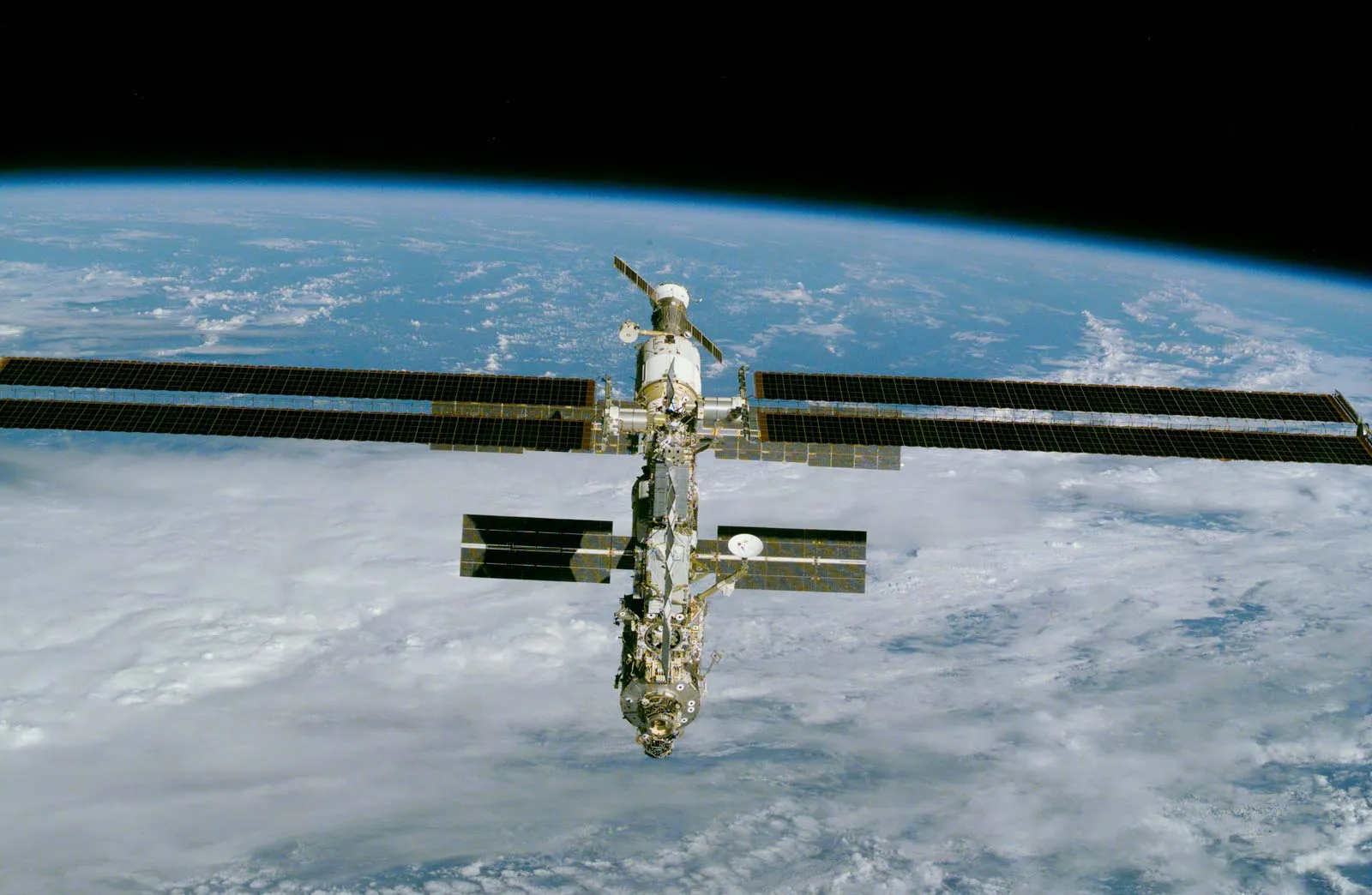Satellites have been the unsung heroes of space exploration, quietly orbiting Earth and beyond, gathering data, enabling communication, and pushing the boundaries of what we believe is possible. From the rudimentary beeps of Sputnik to the sophisticated CubeSats revolutionizing modern missions, satellites have shaped our understanding of the cosmos. This article dives into their storied past, their transformative present, and the thrilling future awaiting them, all while weaving a narrative that’s as human as the dreamers who launched these machines into the stars.
The Dawn of Satellites: A New Era Begins
The story of satellites begins with a single, iconic moment that changed history forever. On October 4, 1957, the Soviet Union launched Sputnik 1, a 183-pound metal sphere that became the first artificial satellite to orbit Earth. Its simple radio signals, broadcast for 22 days, sparked awe and fear, igniting the space race. I remember my grandfather describing the night he heard Sputnik’s signal on his old radio—a faint beep that felt like humanity’s first whisper to the universe.
Sputnik’s Legacy
Sputnik 1 wasn’t just a technological feat; it was a cultural earthquake. Launched during the Cold War, it symbolized human ingenuity and geopolitical ambition. Its success prompted the United States to respond with Explorer 1 in 1958, a lighter satellite that discovered the Van Allen radiation belts, proving satellites could do more than just orbit—they could uncover the universe’s secrets.
Early Challenges and Triumphs
Early satellites faced daunting challenges: limited power, rudimentary communication systems, and the sheer expense of reaching orbit. Yet, each launch built on the last. By the 1960s, satellites like Telstar enabled the first transatlantic TV broadcasts, shrinking the world in ways previously unimaginable. These pioneers laid the groundwork for the sophisticated systems we rely on today.
The Anatomy of a Satellite: How They Work
Satellites are marvels of engineering, but their core components are surprisingly straightforward. A power system (solar, nuclear, or battery), an antenna for communication, an altitude control system for navigation, and a payload for specific tasks like imaging or data collection form the backbone of most satellites. Think of them as high-tech Swiss Army knives orbiting at 17,000 miles per hour.
Power Systems: The Heartbeat of Satellites
Most satellites rely on solar panels, soaking up sunlight to power their systems for years, sometimes decades. Nuclear power, used in deep-space missions like Voyager, steps in when sunlight is scarce. Batteries bridge the gaps, ensuring satellites stay alive during Earth’s shadow. It’s a delicate balance—too little power, and the mission fails.
Communication: Talking to the Stars
Antennas are the voice of satellites, transmitting data to Earth and receiving commands. When I visited a ground station once, I was struck by the massive dishes, silently listening to signals from thousands of miles away. These systems ensure satellites can send back images of distant planets or relay your phone call across continents.
Payloads: The Mission Makers
The payload is where the magic happens—cameras for imaging, sensors for weather data, or telescopes for stargazing. Each satellite is custom-built for its mission, whether it’s monitoring hurricanes or spying on distant galaxies. The payload’s precision determines a satellite’s success, turning raw data into discoveries.
The Golden Age: Satellites in the 20th Century
By the late 20th century, satellites had become indispensable. They transformed communication, weather forecasting, and scientific research. Satellites like Landsat, launched in 1972, began mapping Earth’s surface, revealing environmental changes with unprecedented detail. Meanwhile, GPS satellites revolutionized navigation, making lost road trips (and my teenage misadventures) a thing of the past.
Communication Satellites: Connecting the Globe
Communication satellites like Intelsat brought the world closer, enabling live global broadcasts and instant phone calls. By the 1980s, they were the backbone of global telecom, a role they still play. Imagine trying to coordinate a Zoom call across continents without them—it’s a logistical nightmare.
Scientific Satellites: Peering into the Cosmos
Satellites like the Hubble Space Telescope, launched in 1990, redefined astronomy. Hubble’s images of distant galaxies and nebulae are breathtaking, but its real power lies in data that’s rewritten textbooks. It’s a reminder that satellites don’t just orbit—they explore, uncovering truths we couldn’t see from Earth.
Military Satellites: The Silent Guardians
Military satellites, often shrouded in secrecy, have been pivotal since the 1960s. From reconnaissance to missile detection, they’ve shaped global security. Their role in modern warfare—like guiding drones or monitoring borders—underscores their dual-use nature, a topic that sparks debate about space’s militarization.
The Present: A Satellite Revolution
Today, satellites are more diverse and accessible than ever. The rise of small satellites, like CubeSats, has democratized space. These 4-inch cubes, packing the power of a smartphone 100,000 times stronger than Apollo’s computers, are launched in swarms for everything from climate monitoring to internet access.
CubeSats: Small Size, Big Impact
CubeSats are the underdogs of space exploration. Costing a fraction of traditional satellites, they’ve enabled universities, startups, and even high schools to join the space race. In 2013, a CubeSat captured images of a comet, proving small doesn’t mean insignificant. Their rise is a game-changer, making space exploration inclusive.
Mega-Constellations: The Internet from Above
Companies like SpaceX (Starlink) and OneWeb are launching thousands of satellites to provide global internet. Starlink alone has over 6,000 satellites in orbit, beaming high-speed internet to remote regions. But there’s a catch—these constellations contribute to space clutter, raising concerns about collisions.
Environmental Monitoring: Satellites as Earth’s Guardians
Satellites like EnMAP track CO2 and nitrogen levels, helping us combat climate change. They monitor deforestation, ocean health, and urban sprawl, providing data that drives policy. When I saw satellite images of shrinking Arctic ice, it hit home—satellites aren’t just tech; they’re witnesses to our planet’s story.
Challenges in Orbit: The Dark Side of Satellites
Satellites have revolutionized exploration, but they’ve also created problems. Space debris—abandoned satellites, rocket parts, and even tiny paint flecks—threatens active missions. With over 27,000 objects tracked in orbit, collisions are a real risk. The Kessler Syndrome, where one crash triggers a chain reaction, is a sci-fi nightmare that could become reality.
Space Debris: A Growing Threat
In 2009, a defunct Russian satellite collided with an active one, creating thousands of debris pieces. Each fragment, moving at 17,000 mph, can destroy a satellite or endanger astronauts. Cleaning up space is now a priority, with companies developing “space janitors” to capture debris.
Light Pollution: Dimming the Stars
Mega-constellations like Starlink create light pollution, interfering with astronomical observations. Astronomers report that bright satellite trails ruin telescope images, a problem growing as more satellites launch. It’s a stark reminder that our reach for the stars can obscure them.
Militarization: A Contested Frontier
The militarization of space is escalating. Countries like the U.S., China, and Russia are deploying satellites for surveillance and defense. While these systems enhance security, they also raise ethical questions about weaponizing orbit. International laws exist, but enforcement is tricky.
The Future: Satellites Redefining Exploration
The future of satellites is as boundless as space itself. Advances in AI, reusable rockets, and on-orbit servicing promise to make satellites smarter, cheaper, and more sustainable. By 2030, the global space industry could be worth $170–200 billion, driven by innovation and demand.
AI and Autonomy: Smarter Satellites
AI is transforming satellites. Onboard machine learning allows satellites to analyze data in real-time, like spotting deforestation or avoiding collisions. Ground stations use AI to process massive datasets, making sense of Earth’s complex systems. It’s like giving satellites a brain to think for themselves.
Reusable Rockets: Lowering the Cost Barrier
Reusable rockets, pioneered by SpaceX, are slashing launch costs. What once cost $200 million per launch can now be done for under $90 million. This affordability means more satellites can reach orbit, fueling innovation and exploration. The dream of a lunar base or Mars colony feels closer with every launch.
On-Orbit Servicing: Extending Satellite Life
Imagine a satellite mechanic in space. Companies like Astroscale are developing satellites that can repair, refuel, or deorbit others, extending their lifespan and reducing debris. By 2030, on-orbit servicing could be a billion-dollar industry, keeping our skies cleaner and missions sustainable.
Comparing Satellite Types: Past vs. Present vs. Future
| Type | Past (1950s–1980s) | Present (2000s–2020s) | Future (2030s and Beyond) |
|---|---|---|---|
| Size | Large, heavy (tons) | Small (CubeSats, <10 kg) | Micro/Nano, modular |
| Cost | $100M–$1B per launch | $1M–$10M per launch | Under $1M, reusable rockets |
| Purpose | Communication, recon | Internet, Earth monitoring | AI-driven, space servicing |
| Lifespan | Months to a few years | 5–15 years | 20+ years with servicing |
| Example | Sputnik, Telstar | Starlink, EnMAP | Autonomous repair satellites |
Pros and Cons of Modern Satellites
Pros:
- Affordable access to space via CubeSats and reusable rockets.
- Global connectivity through mega-constellations.
- Critical data for climate change and disaster response.
- Democratization of space for smaller organizations.
Cons:
- Space debris risks collisions and mission failures.
- Light pollution disrupts astronomical research.
- High initial costs for mega-constellations.
- Geopolitical tensions over space militarization.
People Also Ask (PAA)
What is the history of satellites in space exploration?
Satellites began with Sputnik 1 in 1957, marking the start of the space race. Early satellites like Explorer 1 discovered key phenomena, while later ones like Hubble transformed astronomy. Today, CubeSats and mega-constellations dominate, expanding access and applications.
How do satellites contribute to space exploration?
Satellites collect data on Earth and celestial bodies, enable global communication, and support navigation. They monitor climate, map planets, and guide missions, making them indispensable for scientific and commercial advancements in space.
What are the future trends for satellites?
Future satellites will leverage AI for autonomy, benefit from reusable rockets for cost efficiency, and use on-orbit servicing to extend lifespans. Expect growth in mega-constellations and space-based industries like manufacturing by 2030.
Where can I learn more about satellite technology?
Reputable sources include NASA’s website, SpaceX’s Starlink updates, and academic journals like ScienceDirect. Organizations like TS2 Space offer insights into commercial satellite services for industries like healthcare and maritime.
What are the best tools for tracking satellites?
Apps like Heavens-Above and Star Walk help track satellites in real-time. For professionals, software like STK (Systems Tool Kit) offers advanced orbital analysis. Websites like Celestrak provide free satellite tracking data.
FAQ Section
How have satellites changed over time?
Satellites have evolved from bulky, expensive machines like Sputnik to compact, affordable CubeSats. Advances in miniaturization, AI, and reusable rockets have made them more powerful and accessible, expanding their roles in exploration and communication.
Are satellites bad for the environment?
Satellites contribute to space debris, which risks collisions and long-term orbital sustainability. Their launches also produce carbon emissions. However, they provide critical data for monitoring Earth’s environment, aiding climate change efforts.
Can anyone launch a satellite?
Yes, with enough funding and expertise, individuals or organizations can launch satellites, especially CubeSats, which are affordable. Companies like Rocket Lab and SpaceX offer launch services, and regulatory bodies like the FCC oversee approvals.
What’s the biggest challenge for future satellites?
Space debris is the biggest hurdle, with over 27,000 objects tracked in orbit. Solutions like on-orbit servicing and stricter regulations are being developed, but managing clutter remains critical to sustainable exploration.
How do satellites stay in orbit?
Satellites maintain orbit through a balance of velocity and gravity. They travel fast enough (about 17,000 mph) to avoid falling back to Earth, while altitude control systems make small adjustments to maintain their path.
The Human Touch: Why Satellites Matter
Satellites aren’t just machines—they’re extensions of our curiosity, our need to connect, and our drive to protect our planet. When I was a kid, I’d stare at the night sky, wondering what was out there. Satellites answered that question, showing us Mars’ canyons, Earth’s shrinking glaciers, and galaxies billions of years old. They’re proof that even in the vastness of space, humanity’s reach is limitless.
As we look to the future, satellites will guide us to the Moon, Mars, and beyond. They’ll connect the unconnected, warn us of disasters, and maybe even clean up their own mess in orbit. The story of satellites is our story—one of ambition, innovation, and a relentless quest to explore. So, next time you use GPS or check the weather, give a nod to those silent orbiters. They’re out there, working tirelessly, so we can keep dreaming bigger.
Internal Links:
External Links:



